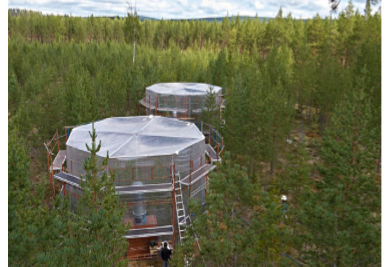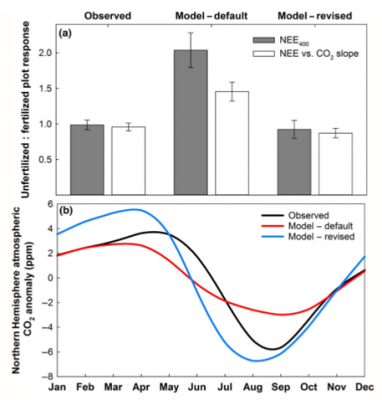Global Model Improved by Incorporating New Hypothesis for Vegetation Nutrient Limitation, Supported by Field Experiment
An innovative and low-cost field experiment provided new results regarding the fundamental process of photosynthetic carbon uptake in the face of varying levels of nutrient limitation. Experimental results refute current modeling approach for instantaneous downregulation of carbon uptake, and support new hypothesis for long-term storage and release of excess carbon.
This new hypothesis has significant impact on seasonal cycle of atmospheric CO2, an important performance metric for global carbon cycle models. The fate of excess carbon can have significant impact on other ecosystem processes.
Models predicting ecosystem carbon dioxide (CO2) exchange under future climate change rely on relatively few real-world tests of their assumptions and outputs. This work demonstrated a rapid and cost-effective method to estimate CO2 exchange from intact vegetation patches under varying atmospheric CO2 concentrations. We found that net ecosystem CO2 uptake (NEE) in a boreal forest rose linearly by 4.7 ± 0.2% of the current ambient rate for every 10 ppm CO2 increase, with no detectable influence of foliar biomass, season, or nitrogen (N) fertilization. The lack of any clear short-term NEE response to fertilization in such an N-limited system is inconsistent with the instantaneous downregulation of photosynthesis formalized in many global models. Incorporating an alternative mechanism with considerable empirical support – diversion of excess carbon to storage compounds – into an existing earth system model brings the model output into closer agreement with our field measurements. A global simulation incorporating this modified model reduced a long-standing mismatch between the modeled and observed seasonal amplitude of atmospheric CO2. Wider application of this chamber approach would provide critical data needed to further improve modeled projections of biosphere–atmosphere CO2 exchange in a changing climate.


